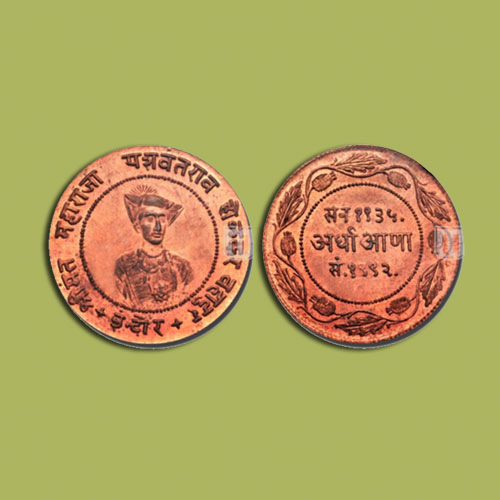A City Is Not Just Popular For Its Street Food But Also For Its Coins: Indore
2021-05-21 Fri
The area of the modern Indore city was a part of the Kampel pargana (administrative unit) during the Mughal Empire. Kampel was administered by the Ujjain government of Malwa Subah (province). This area was controlled by the local zamindars (feudal landlords), who accepted the suzerainty of the Mughal empire. The zamindars received the title of Chaudhari, which established their claim to the land.The modern settlement was developed by Rao Nandlal Chaudhary, the chief local zamindar, who had an army of 2000 soldiers. Under the Mughal rule, his family enjoyed great influence and was accorded confirmatory sanads by the Emperors Aurangzeb and Farrukhsiyar. In the mid-1710s, Nandlal was caught in the struggle between the Marathas and the Nizam of Hyderabad. Once, while visiting the Indreshwar Temple near the banks of river Saraswati, Nandlal found the location to be safe and strategically located, being surrounded by rivers on all sides. He started moving his people and constructed the fort of Shree Sansthan Bada Rawala to protect them from the warring forces. This marked the establishment of the present-day Indore city, which became an important trade center on the Delhi-Deccan route.
Yashwant Rao of Indore Princely State had issued copper Half Anna in name of himself at Indore mint. The obverse of the coin shows, “Bust of Yashwant Rao facing slightly right, Shirimant Maharaja Yashwant Rao Holkar Bahadur Indore in Devanagari”. And the reverse of the coin shows, “Date and Denomination in Devanagari within a wreath”.
Image Courtesy: Mintage World
Latest News
-
Ghiyath Shah as Heir Apparent
2025-09-25 ThuGhiyath Shah was the ruler of the Malwa Sultanate, reigning from 1456 to 1500. From 1456 to 1469, he...
-
Malwa Sultan Mahmud Shah Silver Coins
2025-09-11 ThuMalwa Sultan Mahmud Shah minted silver coins in round and square flans. <br><br> For round coins,...
-
Malwa Sultan Mahmud Shah Billon coin
2025-08-26 TueMalwa Sultan Mahmud Shah's billon coins followed three weight standards: 100 rati, 96 rati, and 80 r...
-
Fascinating Archaeological Facts on Postage Stamps - 91
2025-08-23 SatRhinoceros is one of the oldest land mammal species existing in India. There are five species of rhi...
-
Fascinating Archaeological Facts on Postage Stamps - 90
2025-08-23 SatUthiramerur, a Village in Kanchipuram, Tamil Nadu, is notable for its Temple inscriptions that descr...

